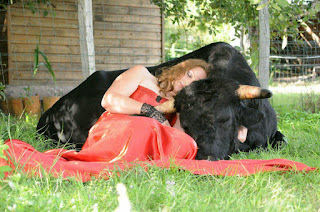In this photo I am with my older sister Wendy, we are in Adelaide Australia fresh off the ocean liner SS Canberra walking across the street where we were first housed in prefabricated Nissen huts.
Pommy Town, a bushland-fringed housing estate. These corrugated huts were designed by a British army engineer, Canadian, Captain Peter Norman Nissen, as portable accommodation and to some, Ten Pound Poms, it was paradise because of its indoor plumbing, a large backyard and, in many cases, ocean views.
In this photo, I'm returning from the hospital. In the middle of the night, I had climbed out of bed in search of water in the stifling heat but couldn’t find any. I unscrewed the top off a French-made Fly-Tox fly sprayer and drank the caustic liquid. My sister saw what I had done and alarmed my parents. My father snatched me up, borrowed next door's pickup truck and drove to the hospital like a twocker.
My parents hated living in the huts and eventually, we moved into a house that was built, exclusively, covered by a mortgage which was also something amazing to them in the late sixties as we had moved from the Victorian slums of St Ann’s Nottingham
Ten Pound Poms (also ten-pound tourist), refers to people from the UK who migrated to Australia under the Assisted Passage Scheme, run by the Australian Government after the Second World War.
The fare for passage to Australia was set at £10. And they could return for free within five years.
Australians referred to us as “Poms" either because of the acronym for 'prisoner of Mother England' P.O.M.E), or from a rhyming slang term for immigrant, pomegranate (sometimes spelt pommygrant) abbreviated forms pommy and pom.
I was reminded often about the fly spray incident. Did it change me, no I still hate flies.






